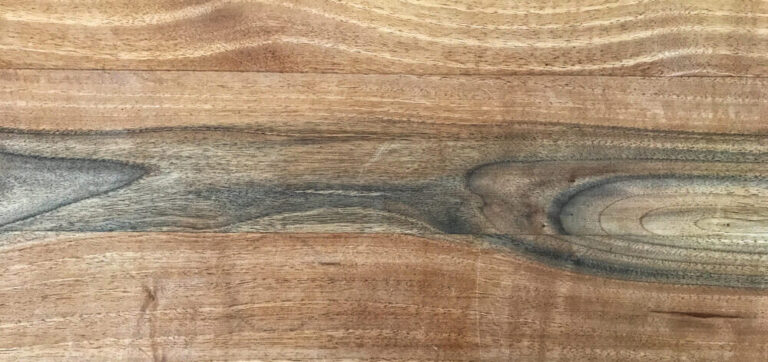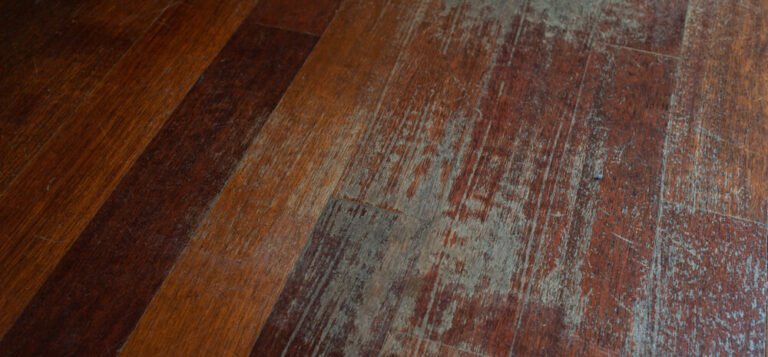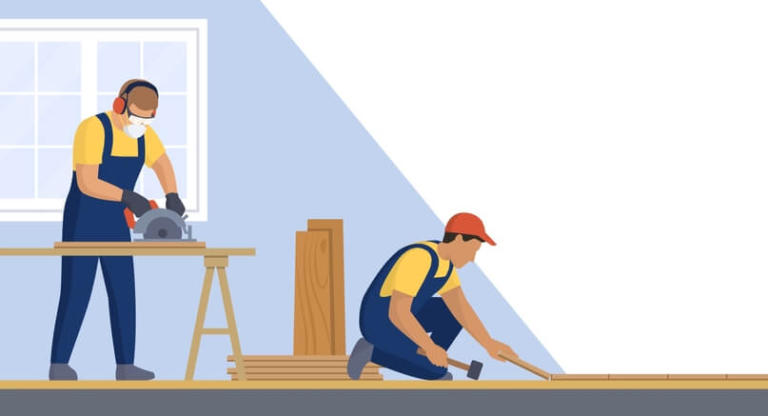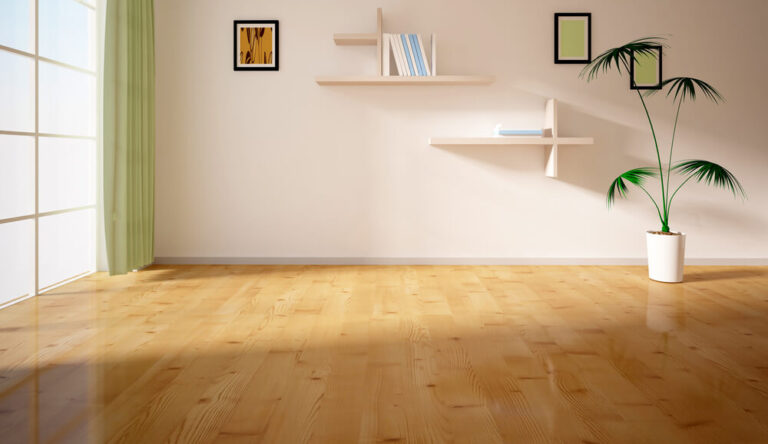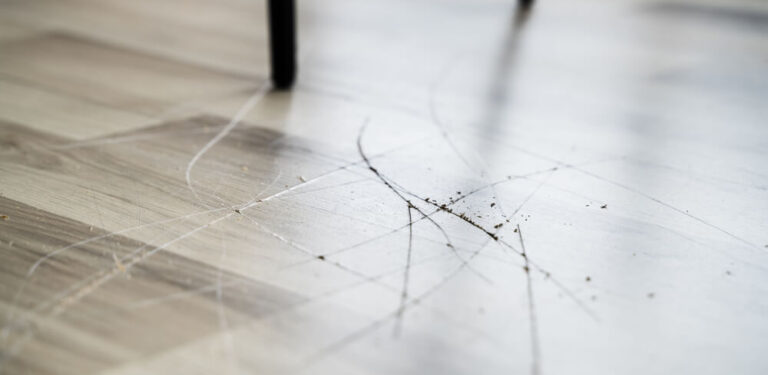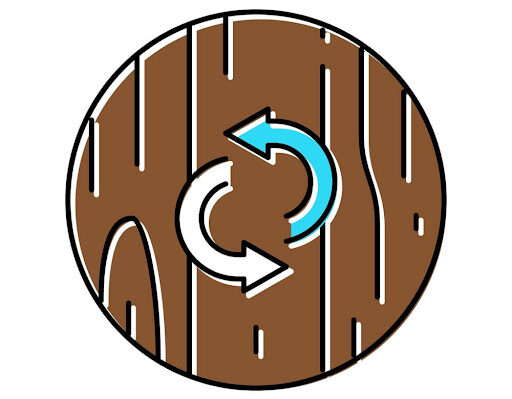
Installing hardwood floors is an investment that can enhance the aesthetic appeal and value of a home. To ensure the longevity and stability of hardwood flooring, proper installation procedures must be followed. One crucial step in this process is acclimating the hardwood flooring material before installation. People are confused and usually ask, “Do hardwood floors need to acclimate?”
Yes, hardwood floors need to acclimate before installation. Acclimation allows the wood to adjust to the environment, preventing issues like warping and buckling. The duration typically takes a few days to several weeks, depending on factors such as wood type and local climate.
In this article, we will explore the reasons behind acclimating hardwood floors, the acclimation process, and its impact on the overall performance of the flooring.
What Is Wood Floor Acclimation?
Wood floor acclimation is the process of allowing hardwood flooring to adjust to the environment where it will be installed. This is crucial because wood reacts to changes in temperature and humidity. Acclimating helps prevent issues like warping, cupping, and buckling.
Do Hardwood Floors Need To Acclimate?
Hardwood is a natural material that reacts to changes in temperature and humidity. The goal of acclimating hardwood floors is to allow the wood to adjust to the environmental conditions of the installation site. This process helps prevent common issues associated with hardwood flooring, such as warping, cupping, and buckling. It offers:
Moisture Content Stability
One of the primary reasons for acclimating hardwood floors is to achieve moisture content stability. Hardwood flooring can absorb or release moisture based on the humidity levels of its environment. Acclimation allows the wood to reach an equilibrium with the surrounding moisture content, minimizing the risk of dimensional changes after installation.
Minimizing Expansion and Contraction
Hardwood naturally expands and contracts with changes in temperature and humidity. If hardwood is installed without acclimation, it may expand or contract after installation, leading to gaps, cracks, or other structural issues. Acclimating the flooring minimizes these changes, ensuring a more stable and durable installation.
Preventing Surface Damage
Rapid changes in moisture content can cause surface damage to hardwood floors, such as cupping or crowning. Acclimating the flooring reduces the likelihood of such damage by allowing the wood to adjust gradually to the environmental conditions.
Acclimation helps wood floors last longer and increases the home value.
How Long Does Hardwood Flooring Need to Acclimate?
The duration varies based on factors like wood type, thickness, and local climate. Generally, acclimation takes a few days to several weeks. It’s essential to follow guidelines provided by the manufacturer and consider the specific conditions of the installation site.
Preparation Before Wood Flooring Acclimation
Room Selection
Choose the room where the wood flooring will be installed for acclimation. This ensures it adjusts to the specific conditions of that space.
Unpacking
Remove packaging from the wood to allow proper air circulation around each plank. This promotes a more effective acclimation process.
Arrangement
Stack the wood planks with spacers between them to encourage even air circulation. This helps each plank acclimate uniformly.
How to Acclimate Hardwood Floors
Acclimating your wood floors is a crucial step in ensuring a successful installation and a long-lasting, beautiful floor. This process allows the wood planks to adjust to the temperature and humidity of the environment they will be installed in, minimizing the risk of warping, gapping, or other installation issues.
Here’s a detailed guide on how to acclimate your wood floors:
Before Delivery
Climate Control
2 weeks before your wood floor delivery, ensure the room temperature is maintained between 60-80°F (15-27°C) and the relative humidity is between 35-50%. This can be achieved using air conditioning, heating, or dehumidifiers, depending on your climate.
Cross Stack the Boxes
If possible, request the wood flooring supplier to deliver the boxes in advance. Once received, open the boxes and cross-stack them in the room where they will be installed. This allows air to circulate around the planks and promotes even acclimation.
Leave the Boxes Unopened
Do not open the individual boxes containing the planks. This prevents moisture fluctuations and maintains the factory-controlled moisture content of the wood.
After Delivery
Measure Moisture Content
After 24 hours, use a moisture meter to measure the moisture content of the wood planks. This helps ensure that the planks are within the recommended range for your climate. If not, adjust the temperature and humidity accordingly and continue the acclimation process.
Acclimation Time
Generally, wood floors require at least 3 days of acclimation for every 1/4 inch of thickness. However, the specific acclimation time may vary depending on the wood species, plank thickness, initial moisture content, and local climate. Refer to the manufacturer’s recommendations for the specific product you purchased.
Monitor Temperature and Humidity
Continue to monitor the temperature and humidity levels throughout the acclimation period. Make adjustments as needed to maintain the recommended range.
Avoid Direct Sunlight
Keep the stacked wood flooring away from direct sunlight and drafts. This helps prevent uneven drying and warping.
Some Additional Tips For Acclimating Hardwood Floors

Following are some of the best practices for acclimating hardwood floors.
- Break down larger deliveries into smaller stacks for better air circulation.
- Use room fans to improve air circulation around the stacked planks.
- If you have a crawl space or basement with similar temperature and humidity levels as the installation room, you can acclimate the wood flooring there.
- If installing during the winter, consider using a humidifier to increase the humidity levels if they fall below the recommended range.
- Always consult with the manufacturer’s instructions and specifications for your specific wood flooring product. They will offer the most accurate and relevant acclimation guidelines.
- Use a moisture meter to check the moisture content of the wood before installing. (Hardwood Floors Magazine)
By following these steps and carefully monitoring the process, you can ensure your wood floors are properly acclimated and ready for a successful installation.
Signs that Hardwood Floors Need to be Acclimated
According to National Wood Flooring Association, If you notice any of the following signs, it may be a sign that your hardwood floors need to be acclimated:
- The planks are warped or bowed.
- There are gaps between the planks.
- The floor is buckling.
- The floor is cracking.
How to Store Wood Flooring?
Room Environment
Store the wood flooring in the room where it will be installed. This ensures it acclimates to the specific temperature and humidity levels of that space.
Ventilation
Allow proper air circulation around the stored wood. This prevents moisture buildup and aids in the acclimation process.
Avoid Extreme Conditions
Protect the wood from extreme temperatures or humidity during storage. This prevents premature changes in the wood’s moisture content.
FAQs

Can Hardwood Flooring Acclimate In The Box?
Acclimating hardwood in the box is ineffective. Planks should be unpacked and spread out in the installation area for proper adaptation.
What Happens If I Don’t Acclimate Hardwood Flooring?
Without acclimation, hardwood may expand, contract, or warp post-installation due to environmental differences, leading to structural issues and aesthetic problems.
How Do You Stack Hardwood Floors To Acclimate?
Stack hardwood planks with spacers between them to facilitate air circulation. This allows for uniform acclimation and prevents warping or distortion.
What Flooring Doesn’t Need To Acclimate?
Certain rigid core or vinyl flooring types often don’t require acclimation due to their stability. Always check manufacturer guidelines for specific flooring recommendations.
Does Engineered Hardwood Need To Acclimate?
Yes, engineered hardwood needs to acclimate. Despite its enhanced stability, acclimation helps prevent potential issues like warping or gaps during installation.
Does Prefinished Hardwood Need To Acclimate?
Yes, prefinished hardwood requires acclimation. Even with the protective finish, allowing the wood to adjust to its environment minimizes the risk of post-installation problems.
How Long Does Oak Flooring Need To Acclimate?
Oak flooring typically needs 3-7 days of acclimation. This duration allows the oak to adapt to the moisture and temperature conditions of the installation space, ensuring a successful and lasting installation.
Conclusion
Acclimating hardwood floors is an important step in the installation process. This is not only a step but it’s a cornerstone for durable hardwood floors. By following the steps and tips above, you can help to ensure that your hardwood floors will look beautiful and last for years to come. If you still have any questions, let us know in the comments below. We will be happy to assist you further.

